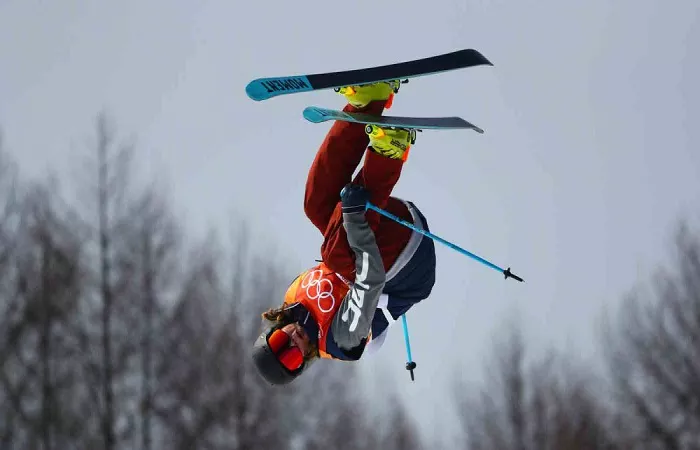Freestyle skiing transcends the boundaries of an ordinary sport, emerging as an electrifying symphony of creativity, precision, and heart – pounding adrenaline. Athletes take to the skies with breathtaking aerial maneuvers and perform gravity – defying tricks, all while demonstrating technical mastery. The snow – covered slopes become their exclusive canvas, where every move is a stroke of athletic artistry. But what truly lies at the heart of freestyle skiing? This article embarks on a deep – dive exploration, uncovering its fundamental elements, diverse disciplines, and the unique, indomitable spirit that defines and distinguishes it in the world of winter sports.
The Elements that Define Freestyle Skiing
Aerial Skills
Terrain Park and Half – Pipe
Mogul Skiing
The Skills Required for Freestyle Skiing
Technical Skiing Skills
Athletic Abilities
Creativity and Style
One of the unique aspects of freestyle skiing is the emphasis on creativity and style. In addition to technical proficiency, skiers are judged on how they perform their tricks, their creativity in combining different maneuvers, and their overall style on the slopes. Creativity can be demonstrated by inventing new tricks or by performing existing tricks in a unique way. Style refers to the skier’s fluidity of movement, their confidence, and the way they present themselves. A skier with good style can make even a simple trick look impressive. For example, the way a skier approaches a jump, the position of their body during the trick, and their landing can all contribute to their overall style.
The Equipment Used in Freestyle Skiing
Skis
Freestyle skis are specifically designed to meet the demands of the sport. They are typically shorter and wider than traditional alpine skis, which provides better maneuverability and floatation in the snow. The shorter length allows skiers to make quick turns, especially in the terrain park and when skiing moguls. The wider waist of the skis helps with stability on uneven surfaces and when landing jumps. Freestyle skis also often have a twin – tip design, which means that both the front and the back of the ski are shaped the same. This allows skiers to ski backwards as easily as forwards, which is essential for performing certain tricks in the terrain park and half – pipe.
Boots
Freestyle skiing boots are designed to provide a good balance between flexibility and support. They need to be flexible enough to allow skiers to move their feet freely, especially when performing tricks that involve bending and twisting. At the same time, they must offer sufficient support to protect the feet and ankles from injury, especially during jumps and landings. The boots are also designed to fit snugly, providing a secure connection between the skier’s feet and the skis. This helps with control and power transfer while skiing.
Bindings
Bindings in freestyle skiing are designed to release in case of a fall, reducing the risk of injury. They are also adjustable to fit different boot sizes and to allow skiers to customize the feel of their skis. The bindings need to be able to hold the boots firmly in place during skiing, especially when performing high – impact maneuvers such as jumps. Some bindings are also designed to be more forgiving, allowing for a bit of movement between the boot and the ski, which can be beneficial for certain types of tricks.
The Appeal of Freestyle Skiing
The Thrill of the Unknown
Freestyle skiing offers a sense of adventure and the thrill of the unknown. Each run down the slope is an opportunity to try something new, whether it’s a different trick in the terrain park, a more complex aerial maneuver, or a faster run through the moguls. Skiers never know exactly how their tricks will turn out, which adds an element of excitement to the sport. The possibility of nailing a new trick or improving on an existing one is a powerful motivator for many freestyle skiers.
Self – Expression
Freestyle skiing is a form of self – expression. Skiers can use their movements on the slopes to show their personality, creativity, and individuality. Whether it’s through the style in which they perform their tricks or the unique combinations of maneuvers they come up with, freestyle skiing allows skiers to express themselves in a way that is uniquely their own. This aspect of the sport is particularly appealing to those who enjoy creative pursuits and want to stand out.
The Community and Culture
Freestyle skiing has a vibrant and supportive community. Skiers often gather at terrain parks and half – pipes, sharing tips, tricks, and experiences. There are also many competitions and events where freestyle skiers can showcase their skills and interact with other skiers from around the world. The culture of freestyle skiing is one of inclusivity, creativity, and a love for the sport. It attracts people of all ages and backgrounds who are passionate about skiing and pushing the boundaries of what they can do on snow.
Conclusion
Freestyle skiing stands out as a multifaceted and exhilarating winter sport, seamlessly blending technical prowess, remarkable athleticism, boundless creativity, and an inherent love for mountainous terrains. The high – flying aerial stunts leave spectators in awe, while the terrain park and half – pipe become arenas for skiers to flaunt their most innovative tricks. Navigating through moguls demands precision and control. Advanced equipment, from specialized skis to high – tech safety gear, plays a crucial role. As more enthusiasts are drawn to its unique charm, the sport is constantly evolving. New, mind – boggling tricks are invented, and fresh ways of self – expression on skis emerge, making freestyle skiing a true symbol of adventure and self – discovery on snow – covered slopes.
Related topics
- WHAT TYPES OF SNOWBOARDS ARE THERE?
- WHAT BINDINGS DO PRO SNOWBOARDERS USE?
- WHEN DOES OBER GATLINBURG SKIING OPEN IN 2025?

